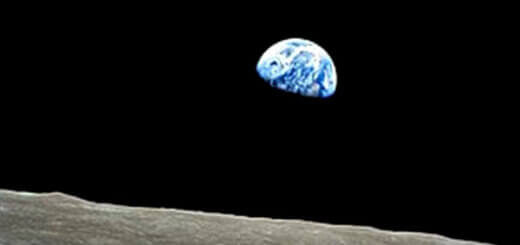Why PoSTS
“POSTS” stands for ‘Perspectives of Society Technology and Science. It will be a series of essays devoted to individuals, societies, and the technology and science possessed by them.
Firstly, a word about the title POSTS, and the order society, technology and science, and not society science and technology. Clearly, societies emerged first, in the history of humanity – families of individuals, clans, settlements etc. etc. So they stay first. Often Science is mentioned before Technology, as in S&T, implying science precedes technology. This is also apparent in some definitions of technology. (See below) But this is not true. More often than not, technology has preceded science in history. For example in the stone age humans made stone tools without knowing applied mechanics or strength of materials. In the Iron age, metallic iron was obtained without knowing any metallurgy. Romans created mild steel without any quantitative knowledge of the role of carbon content of steel in influencing its properties, which came 1700 years later. Use of fluidized beds for catalytic processes was invented before knowing laws of fluidization. The order Society, Technology and Science thus arises from the order in which these three emerged in human life on earth. By this argument, we should abbreviate the general reference to Technology and Science as T&S. However, the term S&T has been widely used for far too long, so we will use it too.
Keywords that make up this title, perspectives, society, technology and science have been defined and used in different ways by different authorities. For unequivocal communication, in the tradition of science, we should define each of these terms.
The word perspective (Latin perspecere – to look closely) appeared in English c. 1350 – 1400 AD. In graphic arts or engineering drawing, perspective refers to a “view” of an object from a distance in space. Here we view the society, science and technology geographically as well as historically.
We also use the word ‘view’ to mean thought or idea. That is why we often ask one another “What is your view?” Thus, perspective has a meaning in the domain of thought too. For our purpose, perspective means – “State of one’s ideas, known facts, and meaningful interrelationships among them” – in this case, concerning Society Technology and Science.
In the worlds of art as well as thought, perspective also means understanding relative importance of things. For this purpose, wherever possible, we will prefer to take a wider world view as well as a detailed view of persons and events concerning Technology and Science in Society. This will help to see patterns and interrelations. For this we may have to adopt an over-view or a closer view of turning points or important events, spread over near or distant past that reveal some features of interrelationships of society, science and technology. Thus, PoSTS is study of relevant historic facts about individuals, human societies, and technologies and science therein, from various points of view, so as to discover and understand interrelationships among them.
The word society (from Latin societas – group of people) appeared in English c. 1525 – 1535. It has been used in natural sciences (biology) or humanities (sociology). In biology, a society is a closely integrated group of organisms of the same species exhibiting division of labor. We invariably reserve this definition for animals other than human beings. For humans, we prefer the definition of society in social sciences. Here, Society is defined as an organized group of persons associated together for an explicit common purpose.
The word science (Latin scire– to know and scientia– knowledge) appeared in English since 1300 – 1350 AD, just before the idea of perspective got crystallized into English language. ‘Organized body of knowledge’ is the simplest definition of science. Human activities that can be called science by this definition are described by words ending in -graphy, -ics, -logy, -nomy, or -sophy. However, this simple definition places astronomy and statistics in the same bracket as astrology and numerology. In the present context we are concerned with knowledge of how the world (macro as well as microscopic) works. We therefore prefer to define science as ‘an organized body of knowledge about how the macro and microscopic universe or cosmos works. We will explore some facets of organization of science, later on.
Interestingly, despite the existence of technology prior to concerned science, the word technology appeared in English around 1605 – 15 AD, much later than the word science. This also explains why many authors do not distinguish between science and technology, and treat technology as subset of science. Now, technology literally means knowledge of art or skill. It is a Greek word composed of technos (art or skill) and logie (body of knowledge or discourse). One may defend clubbing of technology into science because it is also a body of knowledge. However, it is possible to distinguish technology from science, on the basis of what drives them. We will study these distinctions and consequences thereof, later.
For technology, definitions like ‘Application of science to the practical aims of human life or to the change and manipulation of human needs’ have prevailed. This definition implies that concerned science exists before a technology is developed. As we saw above, this is not true. Alternate definition of technology, viz. ‘systematic study of techniques for making and doing things’ misses the principal driving force – ‘need’. We, therefore, adopt a more representative and distinctive definition of technology as ability to create and use means for meeting human needs using available resources.
Engineering, a related term, is derived from English word Engine. This word came into English language c. 1710 – 20 AD, much later than the word technology. Even engineering as a professional activity was established much later than technology. Consequently, many have attempted to define engineering as distinct from technology. However in this treatise we will show that despite differences, engineering is an offshoot and a specific subset of technology. In simple terms Engineering is Technology in the face of constraints.
The reader will also be able to refer to these definitions in the dictionary section of this website, after it is developed.
Human beings are unique animals on earth! They form societies – as small as a family to as large as United Nations. Unlike any other animal, humanity wields the unique asset of science and technology (S&T). S&T enabled human societies are influencing the earth and its biosphere in many ways. Unlike most animals, we can acquire a wide range of perspectives – in thought as well as our senses aided by S&T. For example we can see distant galaxies with our various telescopes or think of unseen objects like subatomic particles that cannot be directly seen even by the best of our instruments. We can conceive multiverse or a structure of the atomic nucleus, as well as processes within them.
With this in background, consider two cases in the recent history.
At the beginning of the twentieth century, the western world regarded horse droppings on the road as obnoxious. Development of automobile based on IC engine was considered to be advantageous for controlling this pollution. Automobiles that kept the roads clean were heartily welcomed by the society, at large. Clearly the perspective was restricted only streets of city X. A hundred years later, we are forced to devote a huge effort for managing pollution by the widespread use of automobile, when the perspective is widened to the whole of earth. Likewise, development of CFC as refrigerants was also driven by a desire to control pollution by ammonia (in industrial environments) and develop safer materials (for industry). Yet, barely 75 years later, we are forced to retrace our steps, and strive towards a CFC free world, after we discover a hole in ozone layer, and understand how ozone helps our survival. We know ecosystems are complex interdependent fragile systems. Yet, we do not know how many species may have been destroyed in the last 100 years, nor do we know their role in the ecosystem, or how critical were they for sustenance of the ecosystem. Despite all this we believe that all our actions were and are in the interest of mankind. Obviously, we need the wisdom to keep our perspectives in order.
A study of the history of science and technology in various societies and the interaction thereof throws up many lessons for, “Technologists Scientists and engineers‘. We would be referring to these professionals repeatedly in this treatise. For brevity we will call them TSEERS. This treatise, POSTS, should appraise the present and future TSEERS of the earth’s past with humans and potential lessons for the future.
Hits: 18


